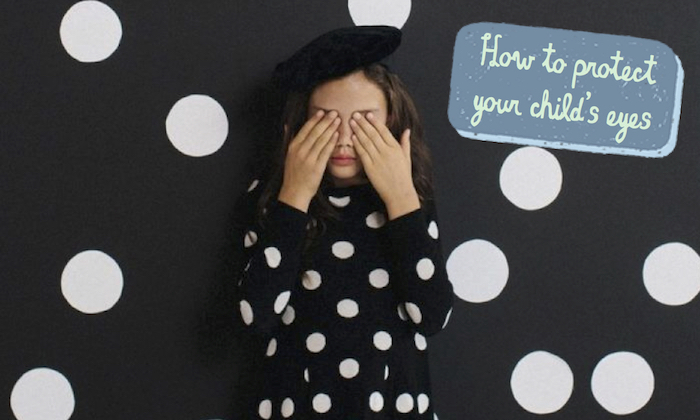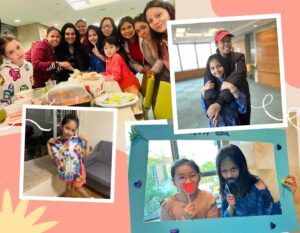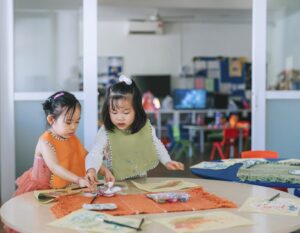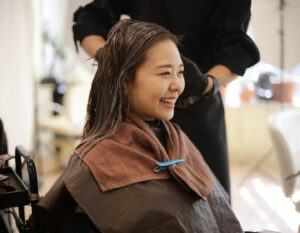
 Post Category - Health & WellnessHealth & Wellness - Post Category - WellnessWellness
Post Category - Health & WellnessHealth & Wellness - Post Category - WellnessWellnessAs mamas, we have a seemingly never-ending list of appointments to remember on a daily basis – doctor’s appointments, parent-teacher sessions, after school activities… the list goes on and on! Although some things may slip through the cracks from time to time, regular eye check-ups shouldn’t be one of them! Vision is one of the most precious things we can keep protected, and even more so for children in their development stages. We enlisted the help of Optometrist Vanessa Thai from iSight to fill us in on the best ways to protect our child’s vision.
Did you know? 1 in 5 children has an undetected vision problem.
Children often accept how they see as the norm. When there is a vision problem, many will strain to adapt not knowing they could see better. Parents can learn to identify signs of a vision problem and seek help quickly.
Good vision is important in helping children achieve their full learning potential and in their educational, physical and social developments. Conversely, vision problems can affect their schooling, hinder sporting activities and result in overall frustration.
Signs of vision problems include:
- Crossed eyes or eyes not pointing in the same direction
- Head turning or tilting when looking
- Frequent blinking and eye rubbing
- Teary or red eyes
- Light sensitivity
- Difficulty learning to read
- Difficulty reading, such as confusing and skipping words
- Close reading distance
- Complaints of headaches
- Complaints of double or blurred vision
- Covering or closing one eye
- Squinting or difficulty recognising familiar people in the distance
- Close TV-viewing distance
- Poor hand-eye coordination
Common causes of vision problems include:
- Amblyopia – lazy eye
- Strabismus – crossed or misaligned eyes
- Myopia – trouble seeing clearly in the distance
- Hyperopia – trouble focusing up close
- Astigmatism – the front of the eye is oval-shaped resulting blurred vision at all distances
Through regular eye examinations and by creating a healthy eye environment, parents can assist to achieve the best possible vision for their children and prevent conditions that may lead to permanent vision impairment.

A healthy eye environment at home involves:
- Visiting a Part 1 registered optometrist on a regular basis, especially at the first signs of a suspected vision problem, because early detection is crucial in treatment success and prevention of these problems.
- Reading with good and even lighting, at an appropriate distance from the book, and encouraging regular breaks.
- Daily outdoors play with varied activities including games, climbing, exploring and building (wear sunglasses and a hat to lessen UV exposure to the eyes).
- Limiting TV, computer and phone time to two hours and with regular breaks.
- Providing a healthy diet of fruits, vegetables, fish and nuts for essential antioxidants, vitamin A and omega-3s that support healthy eye and body function.
Vision is a precious sense – the Hong Kong Department of Health recommends that children have a comprehensive eye examination before commencing school (at age 4), followed by regular visits throughout their primary and secondary school years.
Eye Safety and Protection
Eye injuries are one of the major causes of blindness in children. Many preventable eye injuries occur yearly at home and in school, frequently during sports and hobby activities.
Other common causes of injuries arise from impact, dust, chemicals, heat, radiation and UV radiation. In addition to the eye’s own natural protection features such as the sockets, eyebrows, eyelids, eyelashes and tears, the main types of eye protection are safety goggles and safety glasses.
In the event of an injury, first aid tips include:
- Flushing eyes with water instead of rubbing them when dust or sand enters.
- When splashed with chemicals such as paint or glue, flushing the eyes with water for at least 15 minutes, then having an optometry examination.
- When hit with a blunt foreign object, e.g. a ball, swelling can be relieved with a cold cloth for 15 minutes.
- For serious penetrating injuries, head immediately to the hospital emergency room.
Sun Safety
UV radiation levels can be three times higher in summer than in winter. Like the skin, eyes are prone to UV damage, even on a cloudy day. Therefore, it is imperative to protect them routinely everyday by wearing sunglasses, sunscreen and a hat, and remaining in the shade whenever possible.
Follow these tips and you can help protect your child’s precious vision as they grow and develop into adults!
 View All
View All











 View All
View All





 View All
View All


 View All
View All













